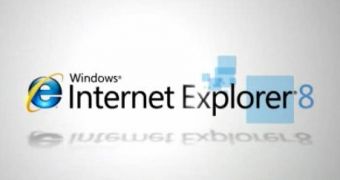Compatibility View in Internet Explorer 8 RTW (release to web) is a set of features designed as the result of Microsoft's efforts not to break the web. Unlike its precursors, Internet Explorer 8 is aligned with modern web standards, including Cascading Style Sheets, Level 2.1 (CSS2.1) from World Wide Web Consortium. But while IE8 brings web developers a step closer to building their content once and deploying for all browsers with the same results, it is also capable of breaking websites that were tailored specifically to the less standards-compatible IE7 for example. This is where Compatibility View kicks into gear in order to preserve the user experience.
Compatibility View “give[s] users a way to mitigate website compatibility problems they may encounter while browsing the web – compatibility issues often caused by Internet Explorer 8’s better implementation of web standards. By default, Internet Explorer 8 displays content in its most standards compliant way and this can cause compatibility problems on websites that still expect the older, less interoperable behavior from IE. Users can override IE’s default behavior by choosing to view a site in Compatibility View - there’s an icon that appears next to the ‘Stop’ and ‘Refresh’ buttons in the address bar that controls this. Overall options for the feature set can be found in the Tools menu,” revealed Scott Dickens, IE program manager.
The gold release of Internet Explorer 8 brings to the table a Compatibility View List, namely a collection of websites that are flagged as experiencing compatibility problems with the browser. In this regard, when the end users will visit websites on the list via IE8 the browser will automatically switch the Compatibility View mode in order to render content as in compatibility mode. The list of websites that have issues with IE8 can be accessed by entering ‘res://iecompat.dll/iecompatdata.xml’ into the browser's address bar.
“Visiting websites on the list causes Internet Explorer 8 to display the site in Compatibility View rather than IE8’s default “best standards mode”. In other words, it’s as if the user pressed the Compatibility View button for all sites on the list with the benefit that the end user avoids having to first experience a website compatibility failure to make the determination that these particular sites are best viewed in a non-default manner,” Dickens added. “Note that the list is only active if the ‘Include updated website lists from Microsoft’ check-box at Tools --> Compatibility View Settings is selected.”
In order to help developers get an insight on the Compatibility View List of IE8, Microsoft is offering the “Understanding the Compatibility View List” resources via MSDN. At the same time, the Redmond company is serving as a free download an Excel document titled “Windows Internet Explorer 8 Compatibility View List.” The document centralizes various pieces of information related to items on the IE8 RTW Compatibility List including the domain name and the compatibility status. Microsoft promised that the list would be updated every couple of months.
Internet Explorer 8 (IE8) RTW is available for download here (for 32-bit and 64-bit flavors of Windows XP, Windows Vista, Windows Server 2003 and Windows Server 2008).

 14 DAY TRIAL //
14 DAY TRIAL //